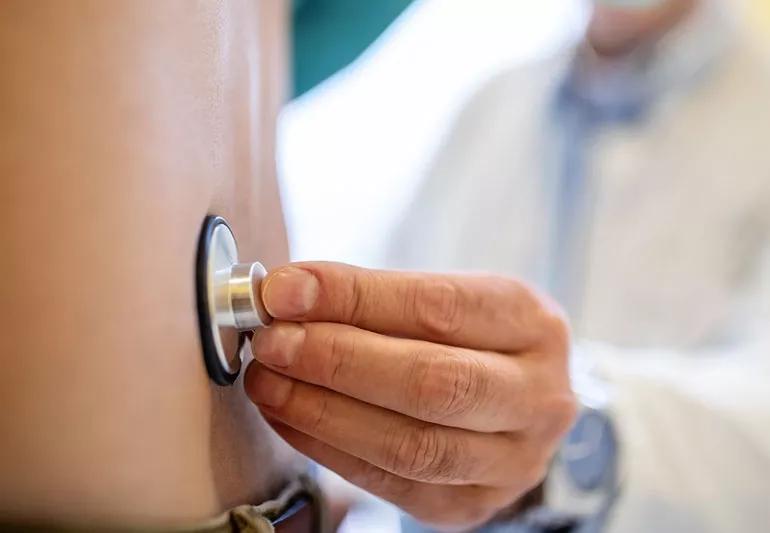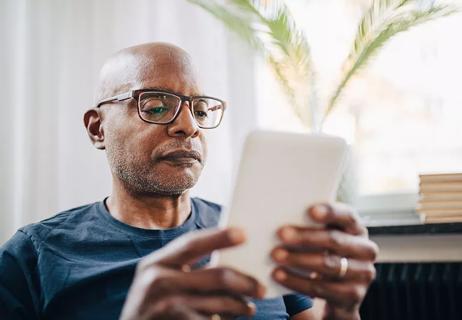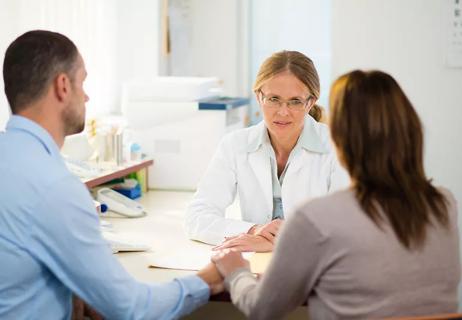This iconic medical tool has an enduring role

The stethoscope has been around for nearly 200 years and is still draped across every physician’s neck or tucked into lab coat pockets. No other medical device can boast a longer life or more useful purpose.
Advertisement
Cleveland Clinic is a non-profit academic medical center. Advertising on our site helps support our mission. We do not endorse non-Cleveland Clinic products or services. Policy
But you may wonder what doctors are actually listening for when they place that cool metal cone against your chest. Cardiologist Umesh Khot, MD, lets us “listen in” on what your heart has to say.
“The most important assessment is whether it’s normal,” he says. “If the heart sound is normal, meaning that there’s a regular beat without any murmurs, that’s a pretty good sign of heart health.”
1. Irregular rhythm: “Sometimes you hear an extra beat, sometimes it’s a skipped beat or it can be bouncing all over,” says Dr. Khot. “We can’t tell what the problem is that’s causing it, but we can get a sense of whether it’s in rhythm.”
2. Heart “murmurs:” A murmur itself isn’t the problem; the abnormal sounds — “whooshing” noises that vary widely — indicate a potential problem. “These signify blood flow problems within the heart, usually a problem with the valves,” Dr. Khot says. “The pitch and where it is in the heart can tell us what the valve problem is. We do additional testing to find out if it’s significant or not.”
3. Signs of congestive heart failure: These sounds are picked up by listening to the heart and lungs for both abnormal heart function and fluid in the lungs.
No matter what physicians hear through a stethoscope, it’s not enough to make a diagnosis. But such exams usually prompt further testing to uncover the cause of abnormal or irregular heartbeats.
Advertisement
Even the tried-and-true stethoscope is evolving with technology:
Despite these recent developments, the traditional stethoscope, without all the bells and whistles, is an enduring part of practicing medicine, says Dr. Khot.
“There’s a lot of evidence that the findings on this exam are powerful in diagnosing how sick a patient is,” he says. “Within five or 10 minutes, you can get a quick sense of whether the person is sick and in need of emergency therapy to save their life.”
Advertisement
Learn more about our editorial process.
Advertisement

Signs are what your provider can see, but symptoms are what you feel or experience

Screenings and tests done during a wellness check can uncover hidden health issues

An annual physical exam is important for many reasons, including your chance to ask questions

From odors to colors, it’s more than OK to ask your doctor these questions

How to get the most out of your appointment

Simple tips to make your visit more effective

It can offer you peace of mind and more information

Tips to help you get the most from your visit

Start having sex about 72 hours before ovulation, then at least every other day during your fertile window

Attachment theory suggests that your earliest relationships shape connections throughout your life

It isn’t a recognized mental health disorder, but research shows that problematic social media use can negatively affect your mental health, self-esteem and sleep